Close Encounters With Foreign Objects: A Slide Show
Infants and toddlers will put just about anything into their mouths. And foreign objects in the GI tracts of children and teens may not be the result of sexual abuse.
X-rays showed the presence of this foreign object in the GI tract of a teenage boy; he was taken to the operating room and a toothpaste dispenser was recovered from his rectum. This was an attempt at self-stimulation.
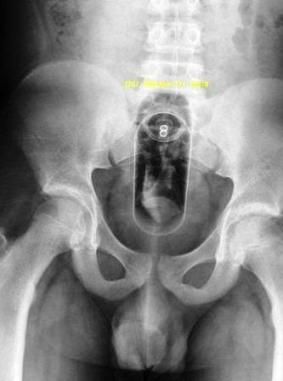
Photo courtesy of Greg Wallace, DO
These radiographs show a penny lodged in the upper- to mid-esophagus of a 13-month-old. Because the coin triggered drooling and pain, its removal was required.
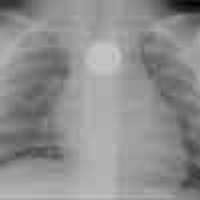
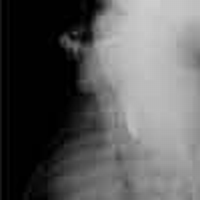
Photos courtesy of John Harrington, MD
A plain abdominal film showed what appeared to be a single coin in the stomach of a young girl. Because the child and her family were travelling the following day, the decision was made to retrieve the foreign body. During an upper endoscopy, 2 coins were located in the body of the stomach. Both were retrieved without complication.
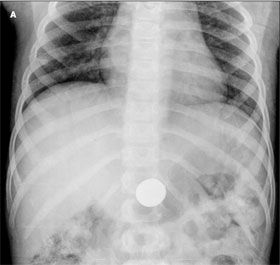
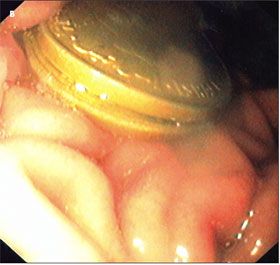
Photos courtesy of Ron Shaoul, MD
Inspiratory (A), expiratory (B), and lateral (C) chest radiographs confirmed the diagnosis of an endobronchial foreign body. Bronchoscopy revealed a blue pushpin that obstructed the right bronchus intermedius and faced proximally into the large airways (D). The larynx, trachea, carina, and left main bronchus were not affected.

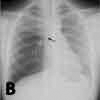
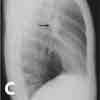
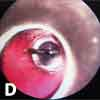
Photos courtesy of John Harrington, MD
In the digestive tract, magnets can aggregate and cause sequelae as grave as intestinal torsion and blood poisoning. The radiograph shows multiple magnets connected in the stomach which, on an endoscopic retroflex view of the stomach cardia and gastro-esophageal junction, were pinching mucosa and causing pressure ulceration. Forceps are visible trying to dislodge the magnets.


Photos courtesy of Jeremy Screws, MD
Figures A, B, and C track the course of a 1½-inch tack traversing the GI tract of a 2-year-old.
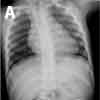
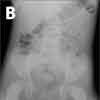

Photos courtesy of John Harrington, MD